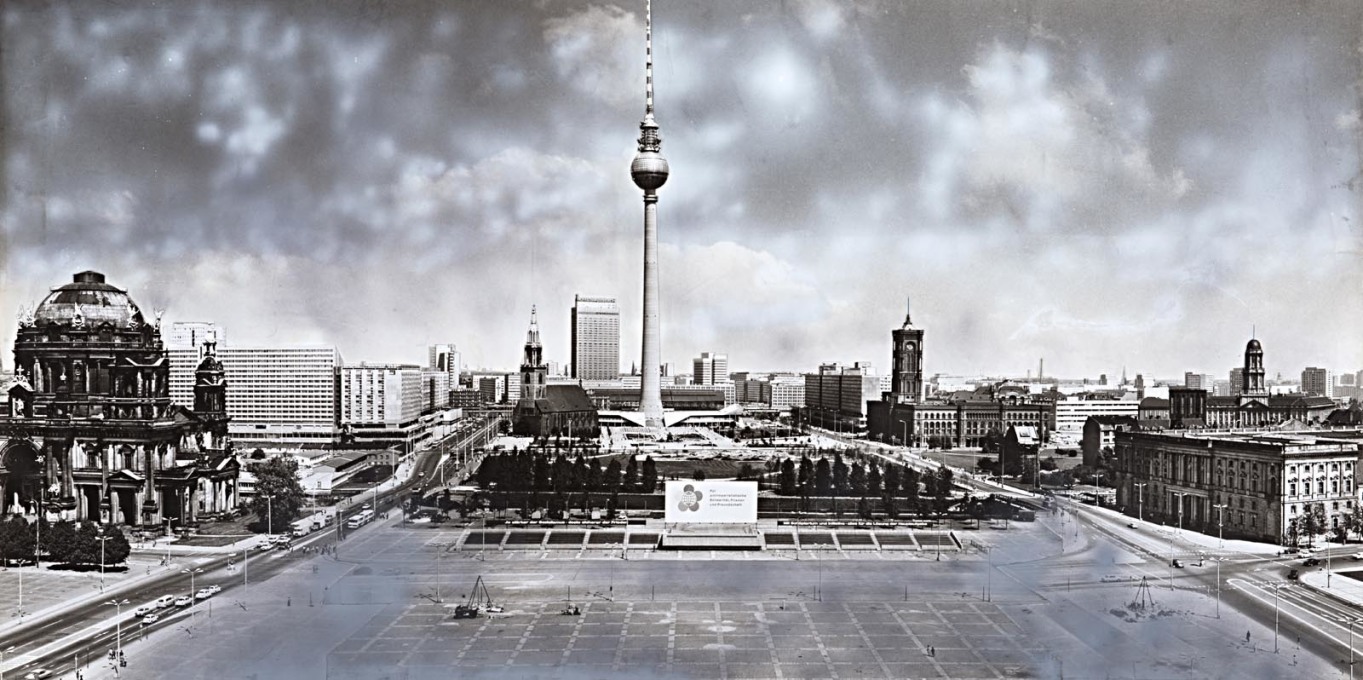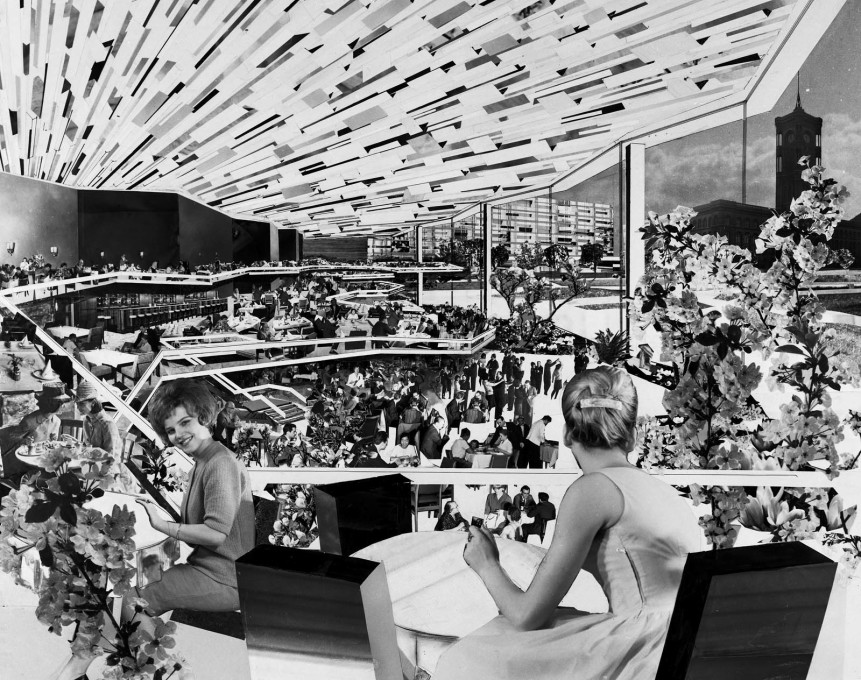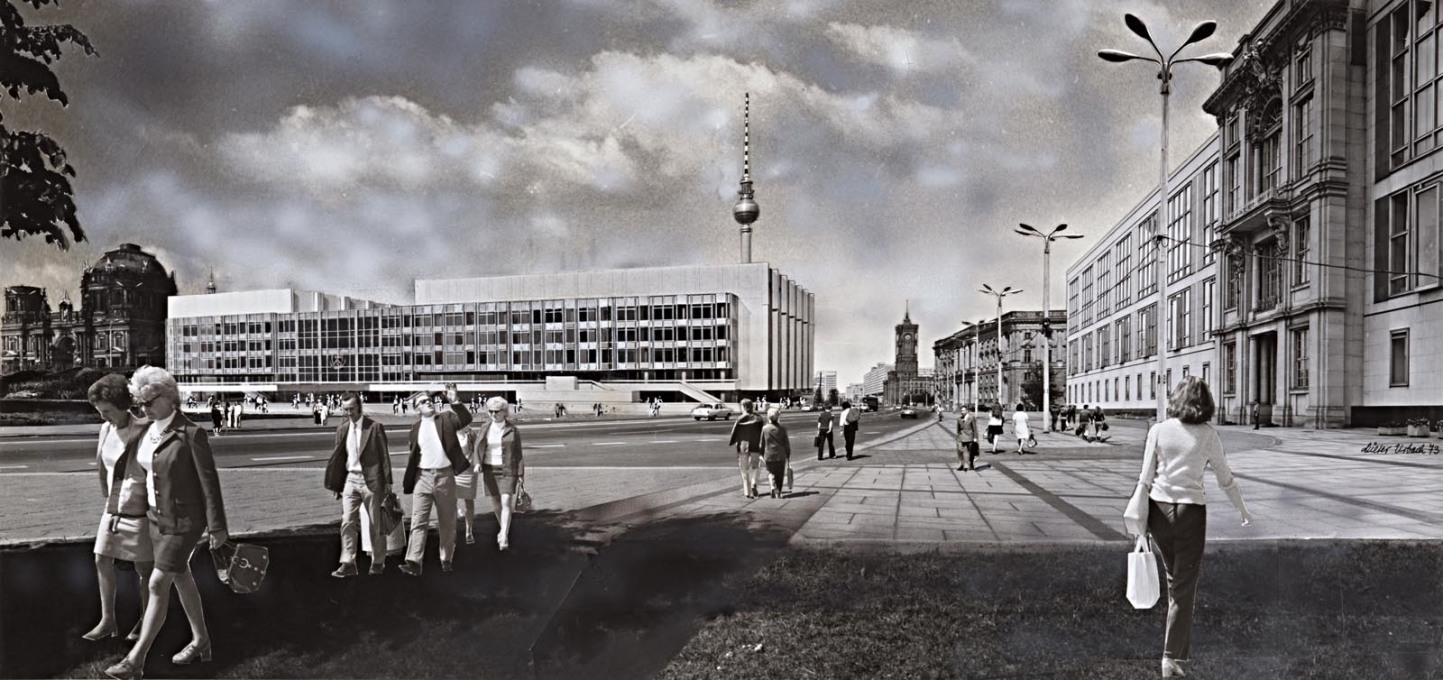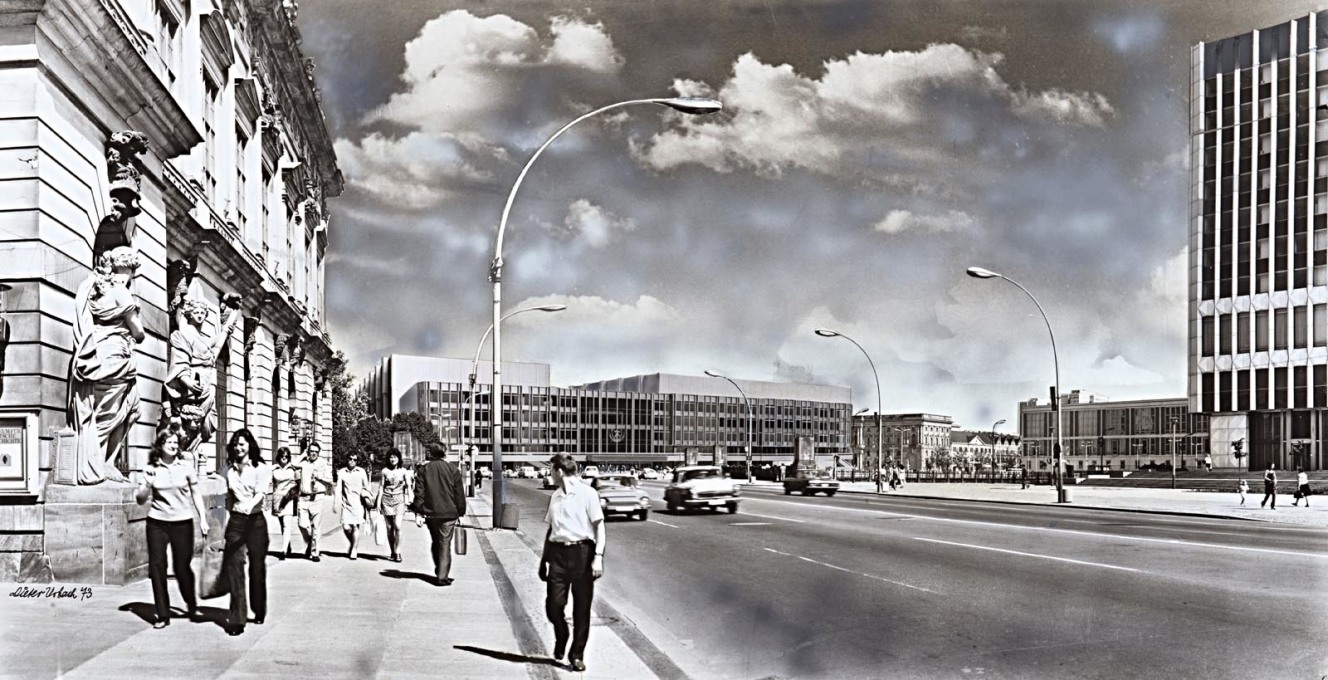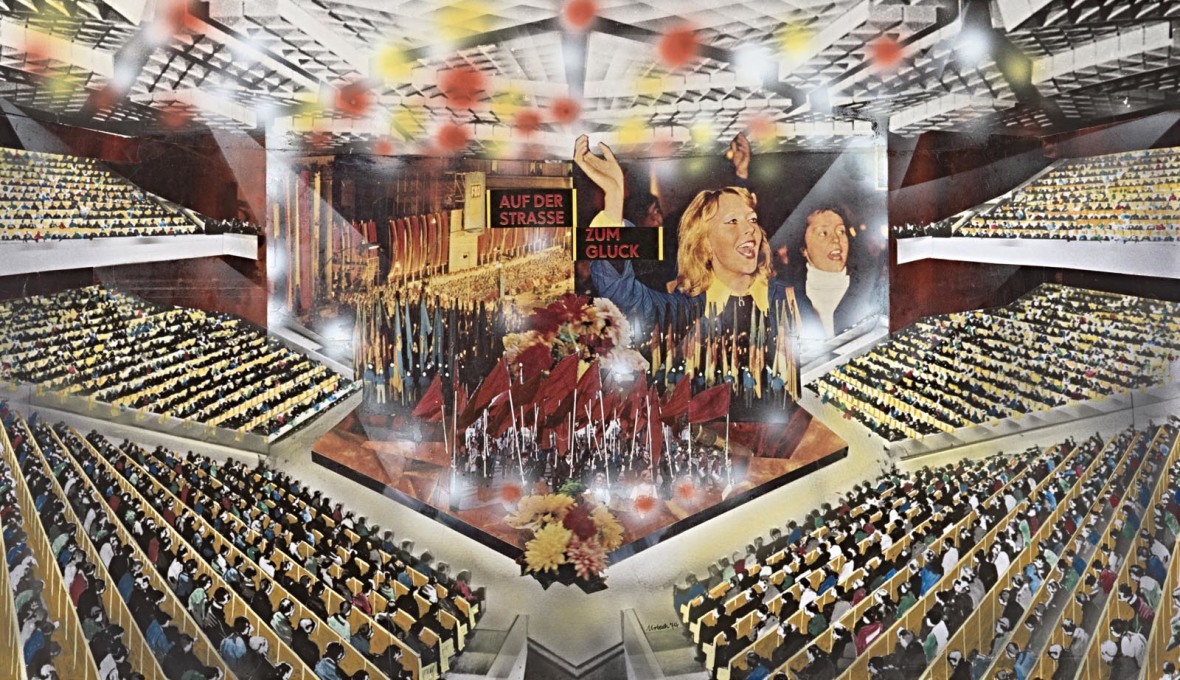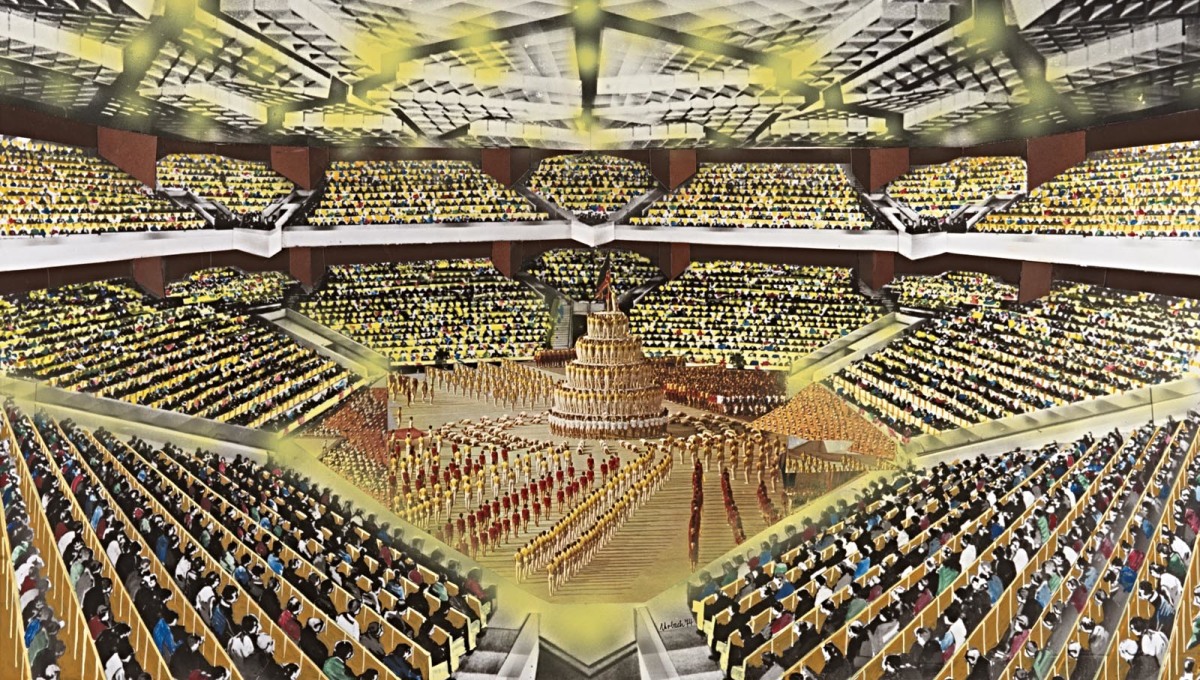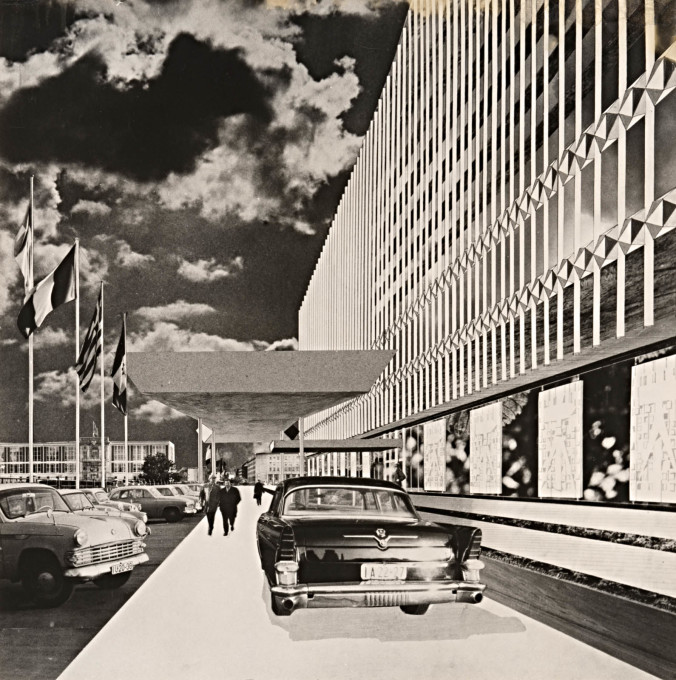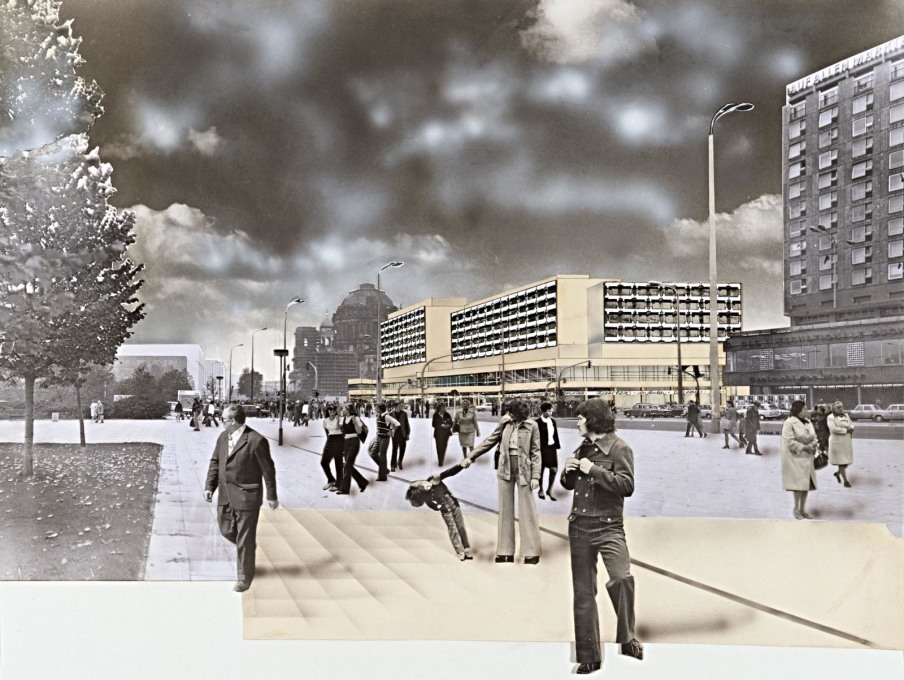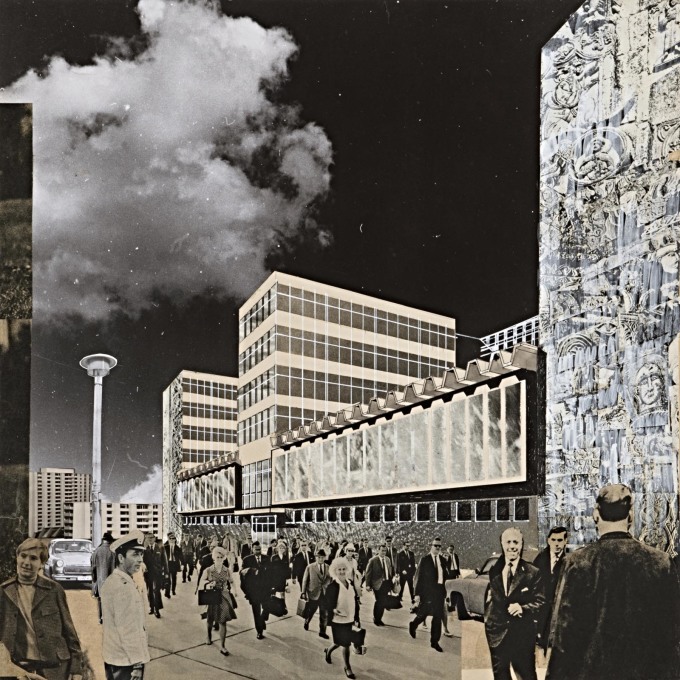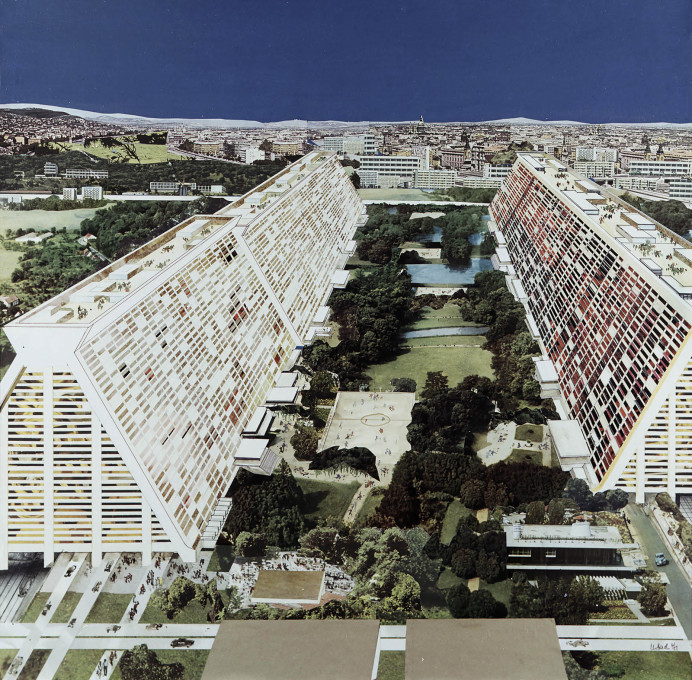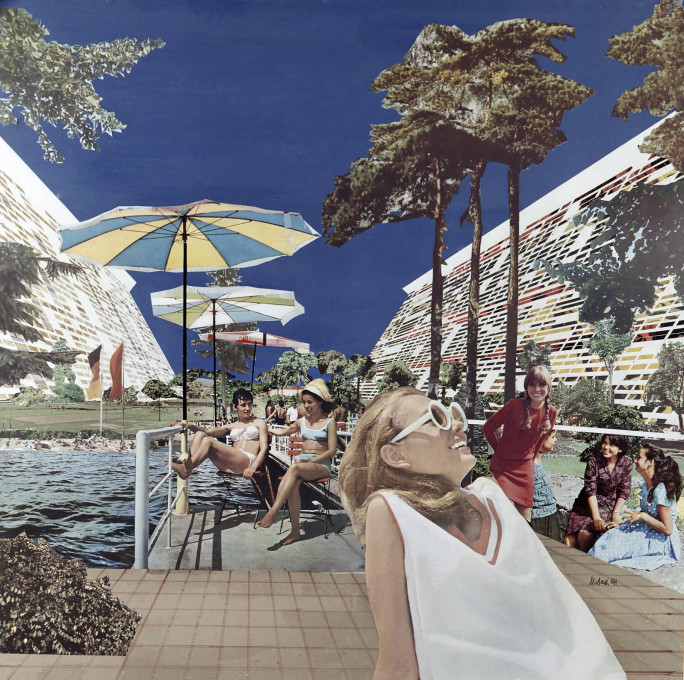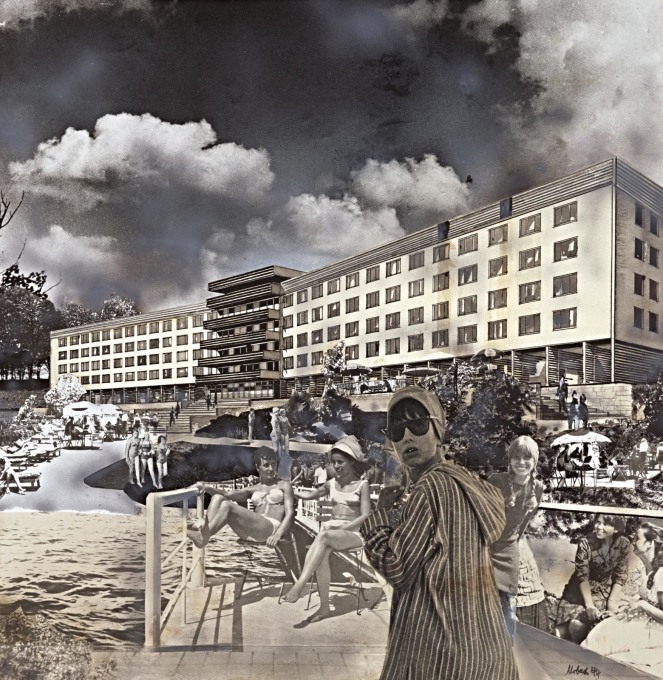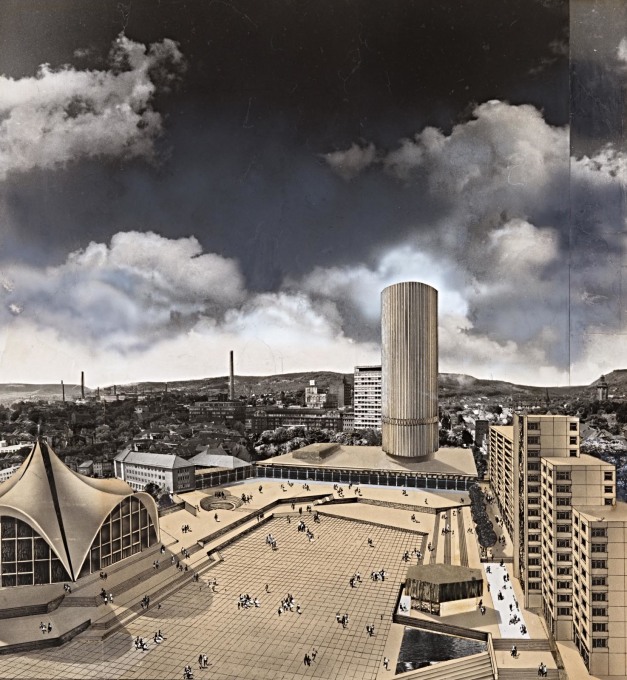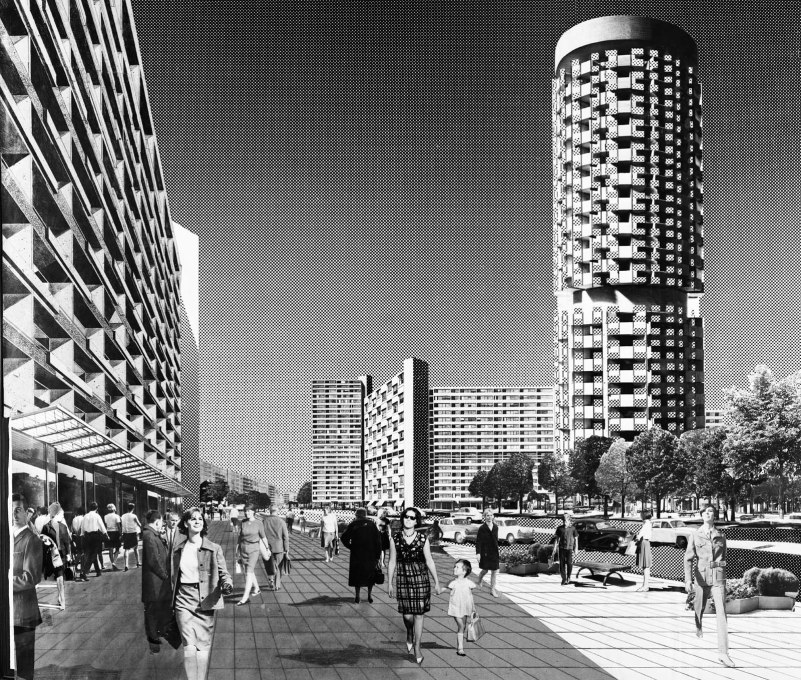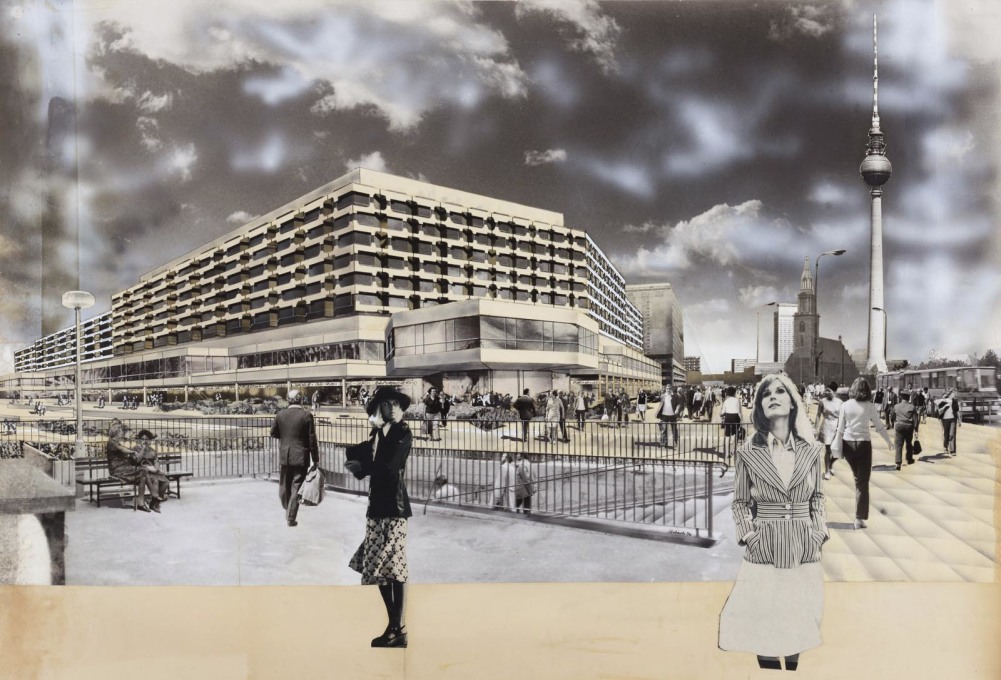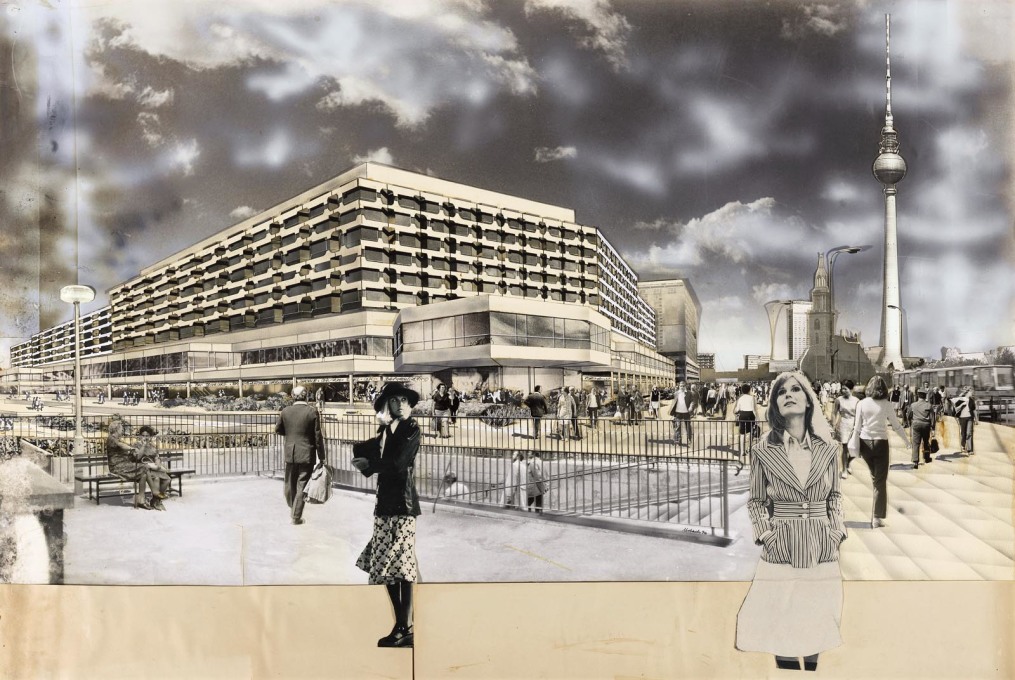Ursula Müller, head of the Architecture Department of the Berlinische Galerie, shares with uncube the story about the rediscovery of a set of extraordinary architecture collages by Dieter Urbach that had fallen into obscurity. Graphic designer Urbach was officially commissioned to produce photomontage perspectives envisioning some of the GDR’s most ambitious projects including the Palace of the Republic, Berlin’s TV tower and some schemes that never broke ground, all in fabulous Internationals Style vogue.
In the 1960s and 70s the rebuilding of post-war German Democratic Republic city centres like Berlin or Jena were far from complete. So the GDR government set about commissioning their top national architects, such as Hermann Henselmann, Heinz Graffunder and Josef Kaiser, to sketch out a number of innovative urban renewal proposals in the International Style that was very much in vogue at the time.
Impressions of these visions of modern GDR cities were brought to life on paper in a series of hand-made collages by graphic designer Dieter Urbach. His paper perspectives, some in black and white, some in colour, served the function that 3D-animation and photorealistic computer rendering does today – giving context to the planned designs in terms of size, forms, materials and the desired location. The goal of these analogue renderings was to use them as a tool to convince planning authorities and state officials.
Combining these modern architectures with shiny cars and beautiful people in fashionable clothes, Urbach seems to prefigure the aesthetics of the computer renderings that were to come decades later. These collages were meant to seduce and indeed they became very popular. As soon as each was completed they were reproduced photographically by the state picture agencies, such as the Deutsche Werbe- und Anzeigengesellschaft (The German Advertising Agency - DEWAG) and shown to the public at building exhibitions and in trade journals.
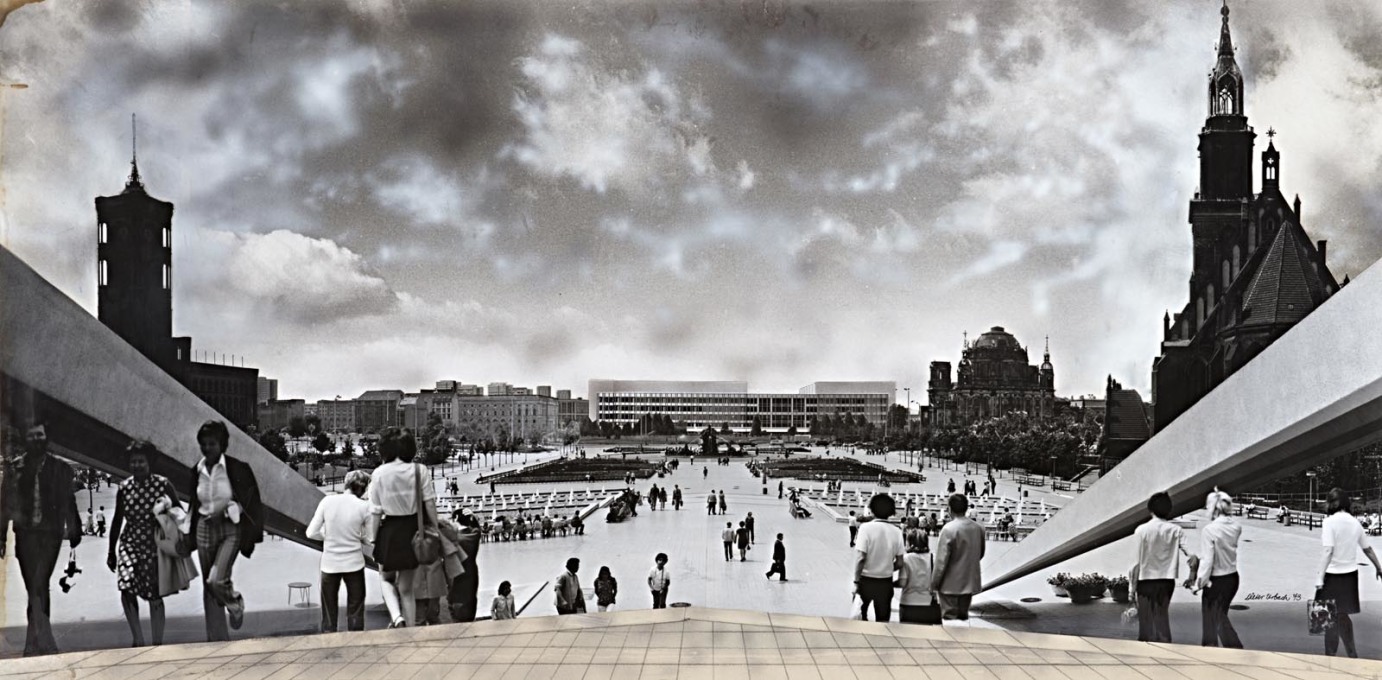
Today, however, the majority of Dieter Urbach’s collages have fallen into obscurity and only exist as photographic reproductions. Our search for the originals began while we were preparing the Radically Modern exhibition in 2015. In true detective fashion, it all began with a stamp found on the back of one of six reproductions in the Berlinische Galerie’s archive, which showed the artist’s name and former address. After talking to a number of former neighbours, we discovered that Urbach was still alive and residing in a little town in Brandenburg, but without a telephone or email connection.
When we finally got in direct contact with him, Urbach was very surprised that after all these years anyone still remembered his work. He invited the gallery archivists to visit and, after digging around in the far corners of his home, they discovered a number of his original collages in a pretty fragile state, as well as some further reproductions where the original works had meanwhile been lost. Most kindly, he donated these to our collection.
Thanks to support of the Kulturstiftung der Länder (Cultural Foundation of the German States) all of Urbach’s remaining collages have been repaired and a selection of them, focusing on the projects in Berlin are now on show to the public again for the first time in nearly fifty years, as part of the presentation of our permanent collection.
– Ursula Müller is head of the Architecture Department of the Berlinische Galerie in Berlin.
Further reading: for more beautiful modes and methods of drawing, surrender to the vision that is uncube issue No.42: Walk the Line. And for an in-depth interview with Ursula Müller on her Radical Modern exhibition in Berlin and more, take a look at the first installment of our Radically Modern blog series.




